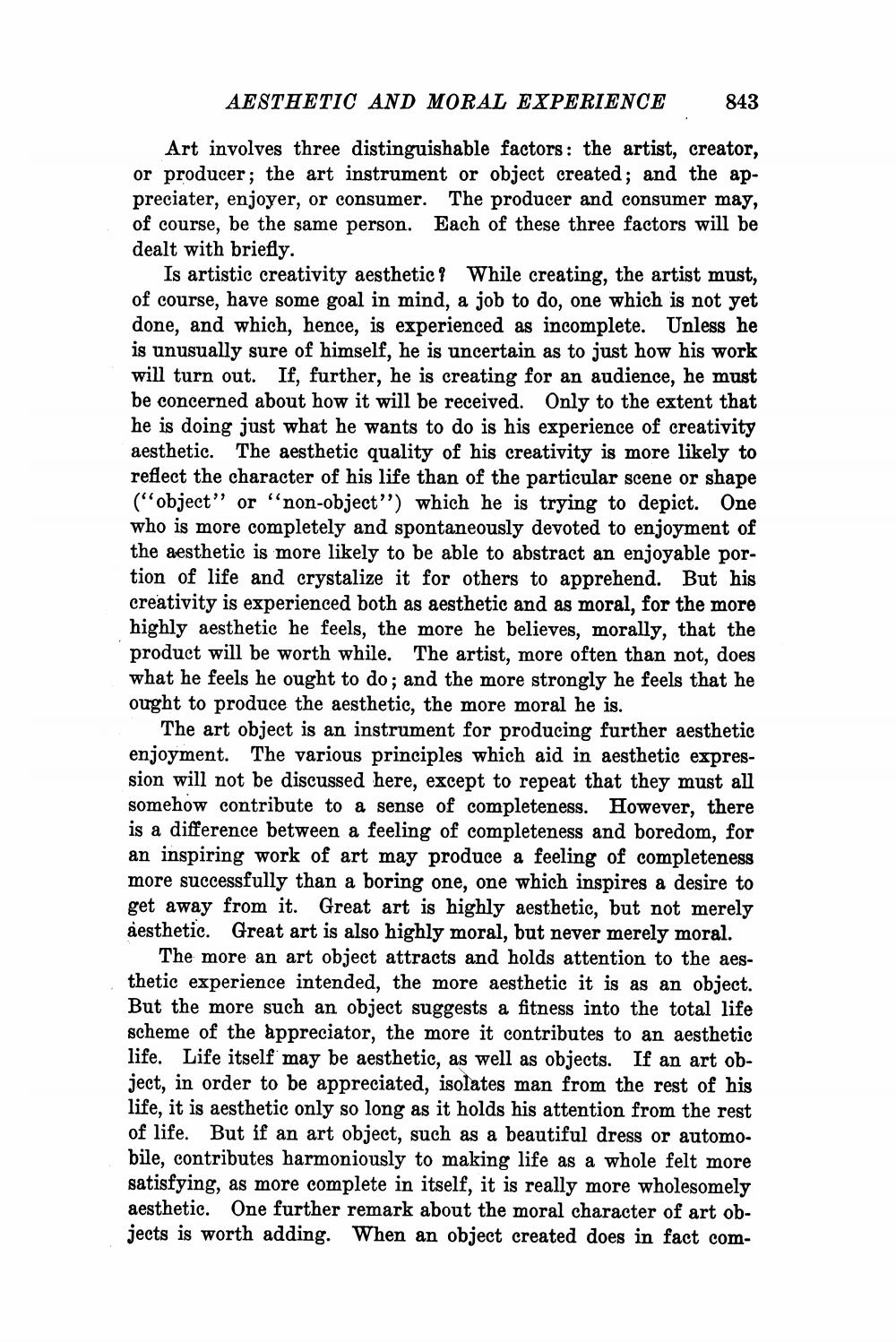Book Title: Three Essays On Aesthetics Author(s): Archie J Bahm Publisher: Archie J Bahm View full book textPage 7
________________ AESTHETIC AND MORAL EXPERIENCE 843 Art involves three distinguishable factors: the artist, creator, or producer; the art instrument or object created; and the appreciater, enjoyer, or consumer. The producer and consumer may, of course, be the same person. Each of these three factors will be dealt with briefly. Is artistic creativity aesthetic? While creating, the artist must, of course, have some goal in mind, a job to do, one which is not yet done, and which, hence, is experienced as incomplete. Unless he is unusually sure of himself, he is uncertain as to just how his work will turn out. If, further, he is creating for an audience, he must be concerned about how it will be received. Only to the extent that he is doing just what he wants to do is his experience of creativity aesthetic. The aesthetic quality of his creativity is more likely to reflect the character of his life than of the particular scene or shape (“object” or “non-object”) which he is trying to depict. One who is more completely and spontaneously devoted to enjoyment of the aesthetic is more likely to be able to abstract an enjoyable portion of life and crystalize it for others to apprehend. But his creativity is experienced both as aesthetic and as moral, for the more highly aesthetic he feels, the more he believes, morally, that the product will be worth while. The artist, more often than not, does what he feels he ought to do; and the more strongly he feels that he ought to produce the aesthetic, the more moral he is. The art object is an instrument for producing further aesthetic enjoyment. The various principles which aid in aesthetic expression will not be discussed here, except to repeat that they must all somehow contribute to a sense of completeness. However, there is a difference between a feeling of completeness and boredom, for an inspiring work of art may produce a feeling of completeness more successfully than a boring one, one which inspires a desire to get away from it. Great art is highly aesthetic, but not merely aesthetic. Great art is also highly moral, but never merely moral. The more an art object attracts and holds attention to the aesthetic experience intended, the more aesthetic it is as an object. But the more such an object suggests a fitness into the total life scheme of the appreciator, the more it contributes to an aesthetic life. Life itself may be aesthetic, as well as objects. If an art object, in order to be appreciated, isolates man from the rest of his life, it is aesthetic only so long as it holds his attention from the rest of life. But if an art object, such as a beautiful dress or automobile, contributes harmoniously to making life as a whole felt more satisfying, as more complete in itself, it is really more wholesomely aesthetic. One further remark about the moral character of art objects is worth adding. When an object created does in fact comPage Navigation
1 ... 5 6 7 8 9 10 11 12 13 14 15 16 17 18 19 20 21 22 23 24 25 26 27 28 29 30 31 32
